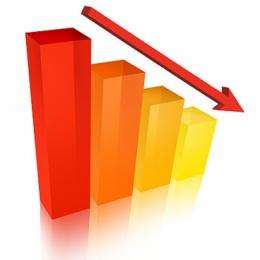The global economic crisis of the last two years has stemmed, in part, from the inability of financial institutions to effectively judge the riskiness of their investments. For this reason, the crisis has cast new attention on an idea about risk from decades past: "Knightian uncertainty."
Frank Knight was an idiosyncratic economist who formalized a distinction between risk and uncertainty in his 1921 book, Risk, Uncertainty, and Profit. As Knight saw it, an ever-changing world brings new opportunities for businesses to make profits, but also means we have imperfect knowledge of future events. Therefore, according to Knight, risk applies to situations where we do not know the outcome of a given situation, but can accurately measure the odds. Uncertainty, on the other hand, applies to situations where we cannot know all the information we need in order to set accurate odds in the first place.
“There is a fundamental distinction between the reward for taking a known risk and that for assuming a risk whose value itself is not known,” Knight wrote. A known risk is “easily converted into an effective certainty,” while “true uncertainty,” as Knight called it, is “not susceptible to measurement.” An airline might forecast that the risk of an accident involving one of its planes is exactly one per 20 million takeoffs. But the economic outlook for airlines 30 years from now involves so many unknown factors as to be incalculable.
Some economists have argued that this distinction is overblown. In the real business world, this objection goes, all events are so complex that forecasting is always a matter of grappling with “true uncertainty,” not risk; past data used to forecast risk may not reflect current conditions, anyway. In this view, “risk” would be best applied to a highly controlled environment, like a pure game of chance in a casino, and “uncertainty” would apply to nearly everything else.
Even so, Knight’s distinction about risk and uncertainty may still help us analyze the recent behavior of, say, financial firms and other investors. Investment banks that in recent years regarded their own apparently precise risk assessments as trustworthy may have thought they were operating in conditions of Knightian risk, where they could judge the odds of future outcomes. Once the banks recognized those assessments were inadequate, however, they understood that they were operating in conditions of Knightian uncertainty — and may have held back from making trades or providing capital, further slowing the economy as a result.
Ricardo Caballero, chair of MIT’s Department of Economics and the Ford International Professor of Economics, Macroeconomics, and International Finance, is among those who have recently invoked Knightian uncertainty to explain the behavior of investors in times of financial panic. As Caballero stated in a lecture at the International Monetary Fund’s research conference last November: When investors realize that their assumptions about risk are no longer valid and that conditions of Knightian uncertainty apply, markets can witness “destructive flights to quality” in which participants rid their portfolios of everything but the safest of investments, such as U.S. Treasury bonds.
One solution offered by Caballero to stem these moments of panic is government-issued investment insurance for large financial institutions. In this sense, the existence of Knightian uncertainty is not just a quasi-philosophical dispute; the subjective perception of Knightian uncertainty among businesses is a pressing practical problem.
More information: You may find other "Explained" articles via Physorg search.
Provided by Massachusetts Institute of Technology



















